
Ingredient
Clams
The Ocean's Delicacy
Clams are bivalve mollusks with a hard shell that encloses a soft, edible flesh. They have a subtly briny and slightly sweet flavor, reminiscent of the ocean. The texture of cooked clams is tender and slightly chewy. The size and shape of clams can vary depending on the species, ranging from small and round to larger and elongated. Clams are often categorized into two main types: hard-shell clams, such as littlenecks and quahogs, and soft-shell clams, such as steamers and razor clams.
Origins and history
Clams have been consumed by humans for thousands of years and have a rich history in various cultures. They were a staple food source for indigenous coastal communities and were also highly valued by ancient civilizations such as the Romans and Greeks. Clams have played a significant role in the culinary traditions of coastal regions around the world, from New England clam bakes to Italian linguine alle vongole. Today, clams continue to be enjoyed globally for their unique taste and culinary versatility.
Nutritional information
Clams are a low-calorie seafood option that is rich in protein and essential minerals such as iron and selenium. They are also a good source of vitamins, including vitamin B12 and vitamin C. However, it's important to note that clams can be high in sodium, so moderation is key, especially for individuals with hypertension or other health conditions that require a low-sodium diet.
Allergens
May contain allergens such as shellfish.
How to select
When selecting clams, choose those that are tightly closed or slightly open. Avoid clams with cracked or damaged shells, as this may indicate spoilage. Fresh clams should have a mild, briny smell reminiscent of the ocean. If the smell is overpowering or unpleasant, it may indicate that the clams are not fresh. Live clams should respond to gentle tapping or squeezing by closing their shells.
Storage recommendations
To maintain the freshness and quality of clams, store them in a cool environment, such as the refrigerator, in a breathable container. It's best to keep them slightly damp by covering them with a damp cloth or paper towel. Avoid storing clams in airtight containers or in water, as this can cause them to suffocate or spoil. It's important to consume clams as soon as possible after purchase for the best flavor and texture.
How to produce
Clams are typically harvested from the wild, but they can also be farmed. If you have access to a coastal area with clean water, you can try your hand at clam digging. However, it's important to check local regulations and obtain any necessary permits before harvesting clams. Alternatively, you can purchase live clams from seafood markets or grocery stores.
Preparation tips
Before cooking clams, it's essential to clean them thoroughly to remove any sand or grit. Start by soaking them in cold water for about 20 minutes to allow them to expel any sand. Then, scrub the shells with a brush to remove any debris. When cooking clams, they can be steamed, boiled, baked, or grilled, depending on the recipe. They are commonly used in dishes such as clam chowder, linguine alle vongole, clam bakes, or as a topping for pizzas and pastas.
Substitutions
Mussels, oysters, or cockles can be used as substitutes for clams in recipes. However, keep in mind that each of these substitutes has its own distinct flavor and texture, so the final result may vary slightly. Additionally, if you're looking for a vegetarian alternative, you can use mushrooms or tofu to mimic the texture of clams in certain dishes.
Culinary uses
Clams are incredibly versatile and can be used in a wide range of culinary applications. They are commonly used in soups, stews, and chowders, such as New England clam chowder or Manhattan clam chowder. They are also popular in pasta dishes like linguine alle vongole or clam linguine. Steamed clams with melted butter or a flavorful broth are a classic preparation. Clams can also be used as a topping for pizzas, added to seafood paellas, or incorporated into stir-fries and seafood salads.
Availability
Clams are commonly available in coastal regions around the world, particularly in areas with access to the ocean or seafood markets. They are popular in North America, Europe, and Asia, where they are enjoyed in various regional cuisines.
More ingredients from this category
Recipes using Clams » Browse all

West Indian Spiced Clam Chowder
Caribbean Delight: Spiced Clam Chowder with a Tropical Twist
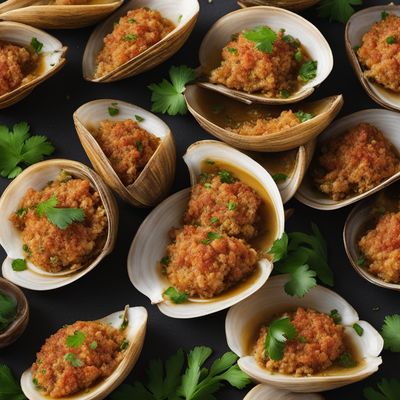
Spanish Stuffed Clams
Seafood Delight: Spanish Stuffed Clams with a Twist
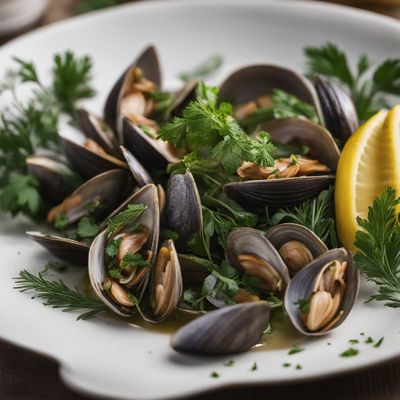
Caspian-style Clams with Herbs and Garlic
Savory Seafood Delight: Caspian Herb-infused Clams

Clams Oreganata with a Twist
Savory Herb-Infused Clams Oreganata

Machas a la Parmesana
Savory Parmesan Baked Clams

Macedonian-style Clam Pasta
Mediterranean Delight: Macedonian-style Clam Pasta

Spicy Soft Tofu Stew
Fiery Delight: Spicy Soft Tofu Stew - A Korean Comfort Classic
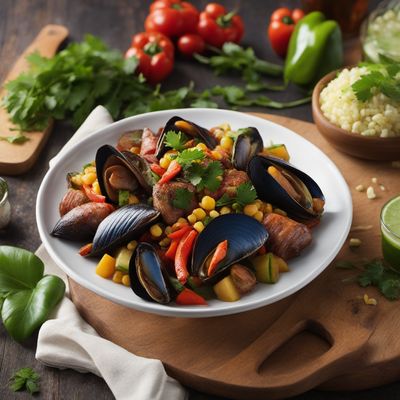
Curanto with Seafood and Vegetables
Oceanic Delight: Curanto - A Seafood Feast from Chilean Shores

Korean Seafood Pancakes
Oceanic Delights: Korean Seafood Pancakes

Hong Kong-style Seafood Hot Pot
Savory Seafood Delight: Hong Kong-style Seafood Hot Pot
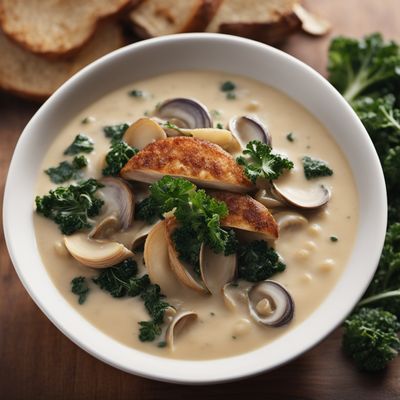
New England Clam Chowder with a Twist
Creamy Seafood Delight: New England Clam Chowder with a Twist
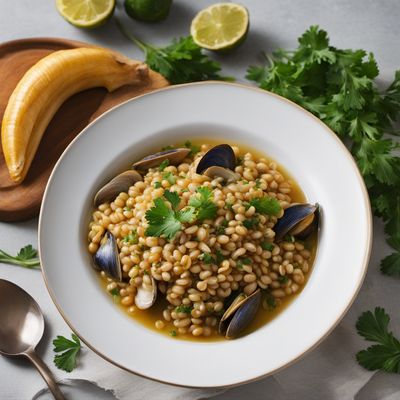
Fregola with Clams
Sardinian Seafood Delight